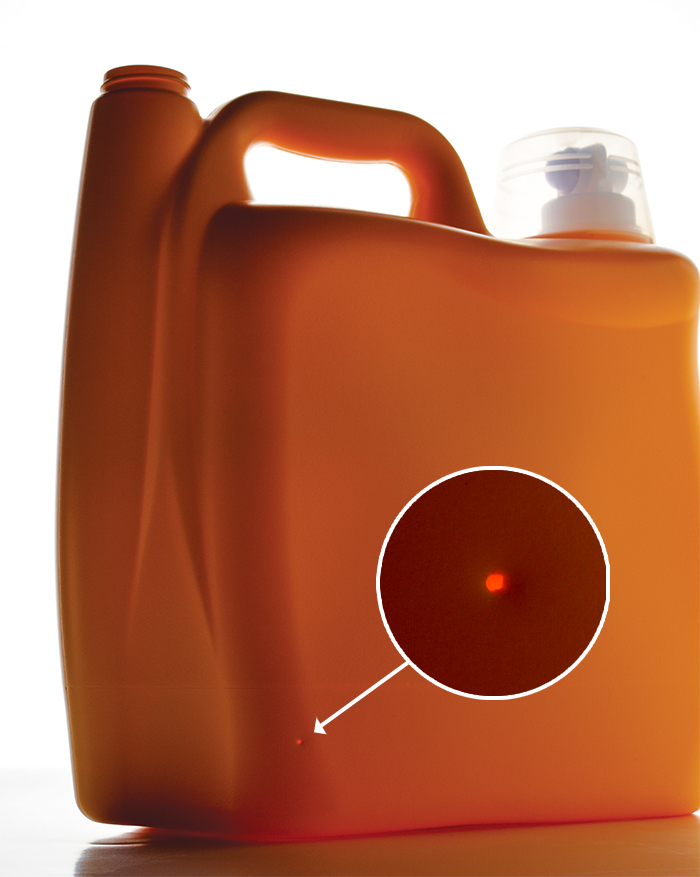Plastic Material Types at Risk of Holes
Holes are primarily found in Polyethylene Terephthalate (PET) plastic during the Extrusion Blow Molding Process (EBM), although they can occur in all plastic materials (HDPE, PP, PVC, etc.) and all processes (IBM, RSBM, or ISBM).
Common Causes of Holes
The most common causes of holes in plastic containers include:
- Contamination particles within the resin. The contaminated area does not stretch like plastic, so the surrounding areas are left thin and susceptible to holes.
- Improper material distribution can cause an uneven container surface with thicker and thinner areas. When the thinner areas are stretched, a hole can occur.
- Improper mold setup or wear, including:
- Low blow pressure or blow rate
- Plugged or inadequate vents
- Air leak around the blow pin
- Mold does not close properly
- Mold doesn’t pinch the parison properly to seal the top or bottom, an EBM problem
General Troubleshooting
Checking for contamination in the resin, ensuring proper mold alignment, and confirming proper melt temperature and blow air pressure are great places to start.

